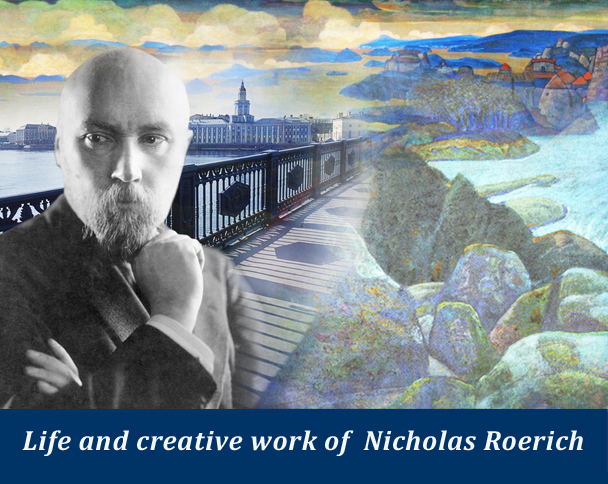 | 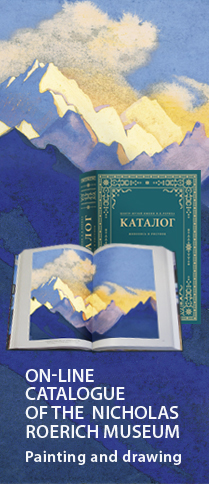 |
|
LIFE AND CREATIVE WORK OF NICHOLAS ROERICH
“It is not easy to describe my life; it had a lot of diversity. Some named this diversity as contradictions… We shall call these life peculiarities work”, says Nicholas Roerich in his autobiography, which opens to us a world of an artist and a scientist, a public figure and a citizen, who is deeply in love with his motherland. His life was truly full of creative, difficult, joyful and passionate work, which seeds grew up in all fields of a man’s activity. He lived in difficult historical epoch of wars and revolutions; life brought him to the East with no chance of coming back to his motherland, but his life is an example of a surprising unity, as if every event of his life is full of such a sense which unites names, dates, countries and cultures. His childhood, youth and almost 18 years of tireless work were in St.Petersburg, much tied him to the city. He was born in St.Petersburg, October, 9th , 1874. His childhood was in the house on the Neva embankment, near Nikolayevskiy bridge (Blagoveshchenskiy Bridge) . In the same house was his father’s office, his father, Konstantin Fyedorovich Roerich, was a well-known notary public. His father’s clients were famous scientists, writers, public figures, art workers, such as Mendeleyev D.I., Kramskoy, Yaroshenko, Myasoyedov, Kuinji A.I and many more. Nicholas Roerich’s mother, Maria Vasilyevna Roerich, born Kalashnikova, was from a merchant’s family. An ancient Scandinavian family of the Roerichs settled in Russia in the time of Peter I and a lot of state and military outstanding people belonged to it. In 1882, when Nicholas Roerich was 8, he entered Karl May private gymnasium school. “He will be a professor”, said Karl Ivanovich May when he first got acquainted with Nicholas. From his early school years Nicholas was interested in art, theatre, history, archeology and travelling, these became the directions of his future creative life. Every summer the Roerichs used to move to Isvara, about 40 versts (70 miles) away from the town of Gatchina. Two Roerich’s favourite passions: history and art, intertwined here. Inquisitiveness of a young scholar brought him to a famous archeologist and scientist L.K.Ivanovskyi, who came to carry out archeological excavations near the Izvara estate in summer, 1883. Many years after N.Roerich would remember that “nobody and nothing ever bring a man to a sense of the ancient world as carrying out excavations with one’s own hand.” His first archeological finds and reports he donated to his gymnasium school. In Isvara the third love came inconspicuously, love to India. According to the legend the estate name etymologically was linked through Sanskrit Išvara – “the grace of God”. “During the reign of Catherine II there lived a Hindu rajah nearby”, writes Roerich in his diary. A painting of a five-headed snowed summit Kangchenjunga was on a wall of the estate room, the mountain which Nicholas Roerich would see later in the Himalayas. Close touch to the ancient world, to their culture would sharpen his will to become an artist and would define his first tunes of creative work. After graduating from Karl May’s gymnasium school in order not to contradict his father’s will Nicholas Roerich entered the Law Faculty of the St.Petersburg University in 1893. But he didn’t give up his dream and he passed the exam to the Imperial Academy of Arts and he managed to attend lectures at the Faculty of History of the University. Since 1895 Roerich attended the famous workshop of Arkhip Ivanovich Kuinji, who became “a teacher of not only painting, but of the whole life too” . His method of teaching was a peculiar one. Arkhip Ivanovich developed a sense of decorativeness of color in his students, he persisted that paintings should be made “by memory”, so that artists thought over composition and color thoroughly. That was the method of Byzantine and ancient Russian masters, that was how ancient Italian and Dutch masters worked, that was the method of the Buddhist masters in the East, and that would be the way Nicholas Roerich would create his pictures, calling them “compositions”. Kuinji would say: “one can explain everything, but one should act and win”. Roerich won a lot of victories. In 1897 for the competition painting “Messenger” he was awarded title of an artist and P. Tretiakov bought the painting for his famous Gallery. Being a student Nicholas Roerich got acquainted with V.Stasov, an outstanding art worker of the time, who would take him to L.Tolstoy. “Let your messenger hold the rudder very high, then he will get to his destination”, the great writer advised to Roerich. In 1898 Roerich was suggested two jobs: an assistant director of a museum of the Society for Encouragement of Arts and an assistant editor of a magazine “Art and Art Industry”. In a year Nicholas Roerich got the position of a secretary of the Imperial Society for Encouragement of Arts. At the same time he started cooperation with art association “Mir Iskustva” (World of Art). His archeology studies were not forgotten too. In summer, 1899 Russian Archeological Society sent Roerich to Pskov, Novgorod and Tver regions to study problems of preservation of monuments of ancient culture. Nicholas Roerich on his way visited Prince Putyatin in Bologoe, Tver region, where he got acquainted with Helena Shaposhnikova, born Golenishcheva-Kutuzova. Two years later, in 1901, Helena Ivanovna married the artist; hand in hand they would pass all the difficulties of life. Many years later Roerich would write: “Forty years are a long term. In such a long sea voyage, there can be many storms and thunder-storms coming from outside. We overcame all kinds of encumbrances together. And the encumbrances turned into possibilities. I dedicated my books: “To Helena, my wife, friendess, companion, inspirer”. Each of these notions was tested in the fires of life. We created together. Not by chance it was said that the creations should bear two names –a man’s and a woman’s…” Nicholas and Helena paid great attention to upbringing of their sons. Senior, Yury was born in 1902 in Okulovka, Novgorod region, and junior, Svyatoslav, was born in 1904 in St.Petersburg. Later Yury Nikolayevich would become an outstanding orientalist, and Svyatoslav Nikolayevich – a famous artist. In 1903-1904 the Roerichs started a big journey through towns of Rus (Russia). More than forty towns they visited, and everywhere Nicholas Roerich tried to penetrate into the most depth, culture, traditions, basis of life. A famous suite “The beginning of Rus. The Slavs” was created; the artist seemed to be an eyewitness of bygone events. He imagined all the diversity of cultural communication of Ancient Rus, he was searching for common roots of ancient cultures. Roerich reached the holy of holies and understood the role of Byzantine heritage for Russia. He thought over the meaning of mystic ceremonies of pagan ancestors. His works would depict all his searching: in synopsis and decoration for a ballet “Sacred Spring” (summer, 1911); in decoration of churches (in Talashkino, near Smolensk, in 1914 the artist finished the mural decorations in the church of the Holy Spirit), in stage decorations for opera “Prince Igor” by Borodin A.P., “Snow-Maiden” by Rimsky-Korsakov. M.Meterlink, Wagner, Ibsen’s works are also in the list of Roerich’s theater and decorative paintings. In spring, 1906, Nicholas Roerich got the position of a director of an art school of the Society for Encouragement of Arts. The reforms introduced by Roerich to the school Aleksandr Benois would call a miracle: “This miracle happened thanks to the energy of one man, one artist – Roerich, who deserves more and more respect for that consistency with which he is fighting for live art against lifeless clichés and red-tape”. Nicholas Roerich headed the school till 1917; during this period the school became one of the biggest democratic educational institutions of Russia. Eighty teachers taught 2,5 thousand of students. The school owned two buildings: in Morskaya street and in Demidov pereulok (Demidov side street), 4 country departments and a superb museum, put together by D.V.Grigorovich. Permanent exhibitions and exhibits of artists and high school students. Besides heading the school Roerich teaches in a composition class, works over decorations for theatres, creates paintings and takes part in the Russian art exhibitions abroad. In 1909 Nicholas Roerich was awarded the title of Academician of the Russian Academy of Arts and became a member of the Reim Academy in France. By this time he was more than once invited to international exhibitions to the biggest cities of Europe, his paintings were bought by the Louvre (France) and National Museum in Rome, the artist’s paintings were in the spotlight of the famous “Russian Seasons”. Roerich’s effective creative work took place in all directions, though some notes of disturbing premonitions appeared in his paintings. In foreboding of 1914 war and knowing about bad condition of culture monuments in Russia Roerich introduces the idea of a Pact for protection of cultural monuments. The Pact should be international and in the beginning of the world war 1st he appeals to the governments of Russia, France, the USA to sign the Pact, but they show indifference. This does not stop Roerich and protection of culture treasures becomes one of the principal aims of his life. In December, 1916 Nicholas and Helena Roerich and their two children Yury and Svyatoslav left for Serdobol, Finland (now Sortavala). For health reasons Roerich could not live in a big city. Living in Serdobol, not far from St.Petersburg gives Roerich an opportunity to come to the city and to continue guidance of the School of the Society for Encouragement of Arts. Roerich met the February revolution of 1917 in Serdobol. In August, 1917 he refuses the guidance of the School because of impossibility to be there every day, but he is still a member of the School Committee and a trustee and takes active part in the School life in new conditions. Besides he is a member of the Commission “on the questions connected with art development in free Russia”, founded by Maksim Gorky. In January, 1918 Finland got independence and in May,1918 closed its border with Soviet Russia. Nicholas Roerich with his family happened to be abroad and could not return to Russia. During this period Roerich mentioned the East, India in his dairies and writings more frequently. His dream - to go to “the mysterious cradle of the mankind” – becomes more feasible. After recovering in 1918 Nicholas Roerich was invited to Stockholm to organize his exhibition. The opening took place on November, 8, 1918; the exhibition was a great success. In Stockholm S.Dyagilyev suggests to Roerich to take part in staging “Prince Igor” opera in London. In March, 1918 the Roerichs left Finland and went to England. This is the end of St.Petersburg period of Nicholas Roerich’s life. All was in it: dreams and passion to faraway India, love to his people, to its past with all diversity of its ancient communications, and swift desire to protect and save the cultural heritage of the world and Russia . This period is an important landmark in the Roerichs’ life; thanks to the talents, hopes, will, as well as work, thorough, joyful and passionate work this period opened way to great achievements and beautiful victories which are so needed by us today. | 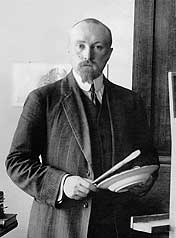
N.Roerich in the School of the Society for Encouragement of Arts.
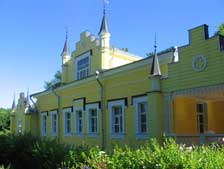
The Roerichs’ estate in Isvara.
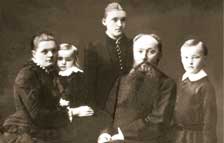
The Roerichs’ family ((left to the right): Maria Vasilyevna (born Kalashnikova), Vladimir, Lidiya, Konstantin Fedorovich, Nikolay. St.Petersburg, 1884 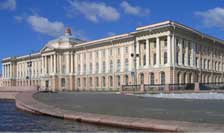
Academy of Arts. View from the Neva River 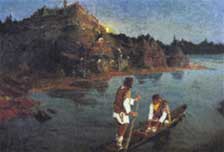
N.Roerich.Messenger. A kin rose against a kin.
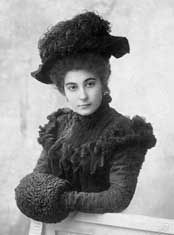
Helena Roerich (Shaposhnikova).
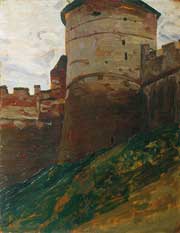
N.Roerich. Nizhniy Novgorod Kremlin. Tower. Architecture sketches series.1903 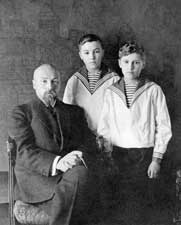
N.Roerich, Yury and Svyatoslav Roerich. 1914–1915 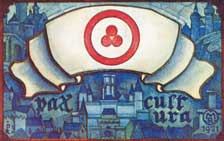
N.Roerich. The Banner of Peace.«Pax cultura». 1931 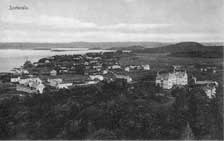
Serdobol. View from Kuhavuori. 1910s. 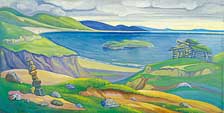
N.Roerich.On the Lake Shore. 1911. | |
Copyright © 2008-2024 ST. PETERSBURG BRANCH OF THE INTERNATIONAL CENTER OF THE ROERICHS
Life and creative work of Nicholas Roerich | Exhibitions | Excursions | Scientific research | Protection of the Roerichs' name and heritage
